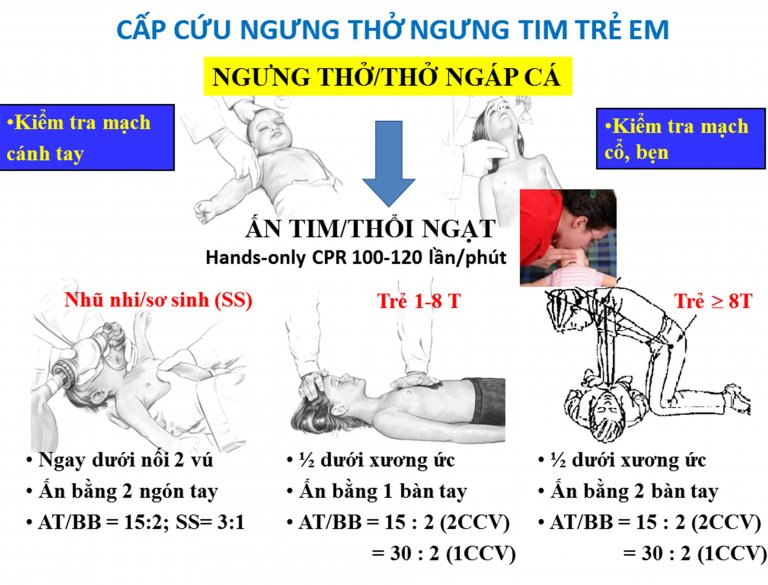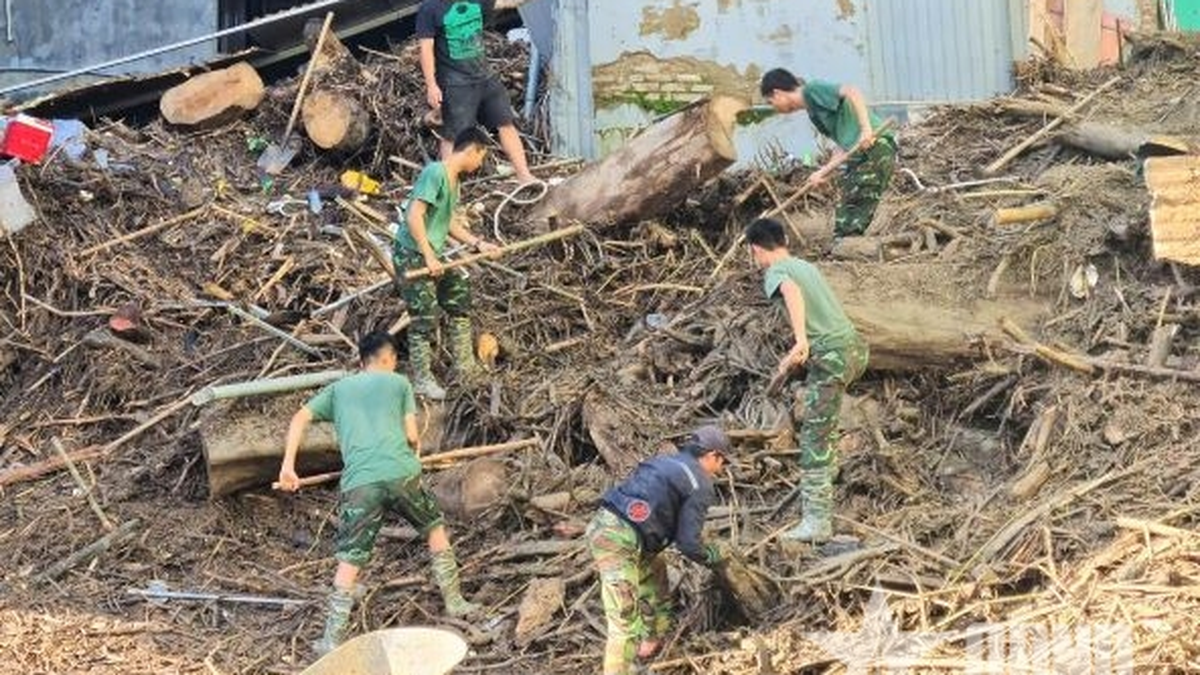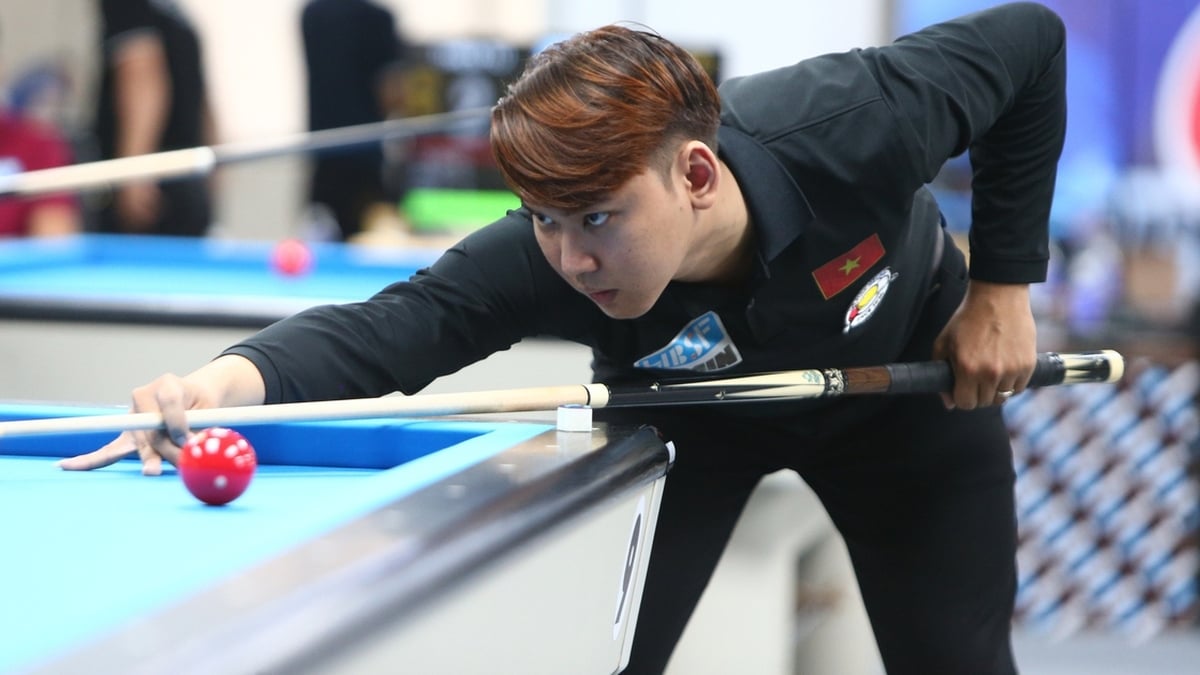On May 8, Dr. Dinh Tan Phuong, Head of the Emergency Department, Children's Hospital 1 (HCMC) said that the hospital had just received a 3-year-old child named NTH (living in Long An ) who had drowned.
Accordingly, taking the medical history, the family said that while getting water to play with a water gun in a 50cm high bucket, the baby accidentally fell headfirst into the bucket. Although the bucket only contained a small amount of water, when the family discovered it, the baby was purple and motionless. Immediately, the baby was pulled out, dried, shaken with water, and held over a fire to warm him up. About 15 minutes later, the baby was transferred to a local hospital in a purple state, with a pulse and blood pressure of zero. Here, the doctors performed cardiopulmonary resuscitation, intubated the baby, and immediately transferred him to Ho Chi Minh City for emergency care.
At the Emergency Department, Children's Hospital 1, the doctor noted that the baby was still in a deep coma, with a Glasgow Coma Scale score of 3 (normal 15 points), was being given a balloon, a ventilator, pupils dilated 4mm, and lost light reflexes. The baby was given IV fluids, anti-shock medication, and vasopressors and cardiac support. Doctors treated the baby intensively for 3 days but the baby did not survive.
Dr. Phuong warns that drowning accidents in young children can happen in swimming pools, ponds and even in the home with objects such as buckets and basins. When a child drowns and his heart and lungs stop, cardiopulmonary resuscitation is needed immediately at the scene. If the lack of oxygen to the brain lasts more than 4 minutes, the child will suffer severe brain damage. If it lasts more than 10 minutes, the child's life may be in danger. In particular, when a child drowns, parents should absolutely not perform unnecessary first aid actions such as shaking the child with water, holding it over a fire or forcing the parents not to be around when the child drowns or suffocates. These actions cause the child to lose the opportunity to be rescued in time, facing the risk of brain damage and death due to lack of oxygen.
In just the past month, children’s hospitals in Ho Chi Minh City have continuously received emergency treatment for children who were suffocating and drowning. Previously, the City Children’s Hospital (Ho Chi Minh City) also received a 2-year-old girl in critical condition after falling headfirst into a bucket full of water for about 5 minutes. The girl was unconscious, cyanotic, and was later rescued.
Avoid mistakes when children drown
Dr. Nguyen Minh Tien, Deputy Director of the City Children's Hospital (HCMC), said that when a child is drowning, parents should avoid the following wrong actions:
Do not spend too much time on water shock. Turning the victim upside down is unnecessary and should not be done because usually the amount of water entering the lungs is very small, not the lungs are full of water as people often think. This very small amount of water will be expelled when the victim breathes again. In addition, water shock also slows down the time for CPR, chest compressions and increases the risk of aspiration.
If victims of respiratory and cardiac arrest are not given CPR and chest compressions at the scene of the accident or while being transported to a medical facility, the brain and organs will suffer from prolonged lack of oxygen, brain cell death, leading to death and severe brain damage. Therefore, it is best to give CPR immediately after lifting the victim's head out of the water before bringing them to shore and continuing CPR. In particular, do not let children roll around.
To properly give first aid to a drowning child, Dr. Tien gives the following instructions:
When discovering a drowning person, quickly take the victim out of the water by giving the victim an arm or a long pole to hold, throwing a buoy or scooping the victim up (grabbing the victim's hair or collar and pulling them to shore, avoiding letting the victim hug tightly, leading to both of you sinking into the water); place the victim in a dry, airy place.

Summary diagram of cardiopulmonary resuscitation (CPR) for children with respiratory and cardiac arrest
If the victim is unconscious, check to see if he or she is breathing by looking for chest movement. If the chest is not moving, meaning the victim is not breathing, perform chest compressions on the lower half of the sternum.
Coordinate chest compressions and mouth-to-mouth resuscitation in a ratio of 15/2 (2 rescuers) or 30/2 (1 rescuer) for 2 minutes, then reassess whether the victim can breathe again, whether the lips are pink, and whether there is a response to painful stimulation. If not, continue these first aid actions even on the way to the medical facility. In case for some reason CPR cannot be given, chest compressions 100-120 times/minute can also be effective in reviving the child's respiratory circulation.
If the victim is breathing, place him or her in a safe position, lying on his or her side to allow for easy drainage of vomit if he or she vomits. Remove any wet clothing and keep him or her warm by covering him or her with a blanket or dry towel. Get the victim to a medical facility immediately, even if he or she appears to be fine or has fully recovered after first aid, as secondary respiratory difficulties can occur several hours after drowning.
Source



































































































Comment (0)